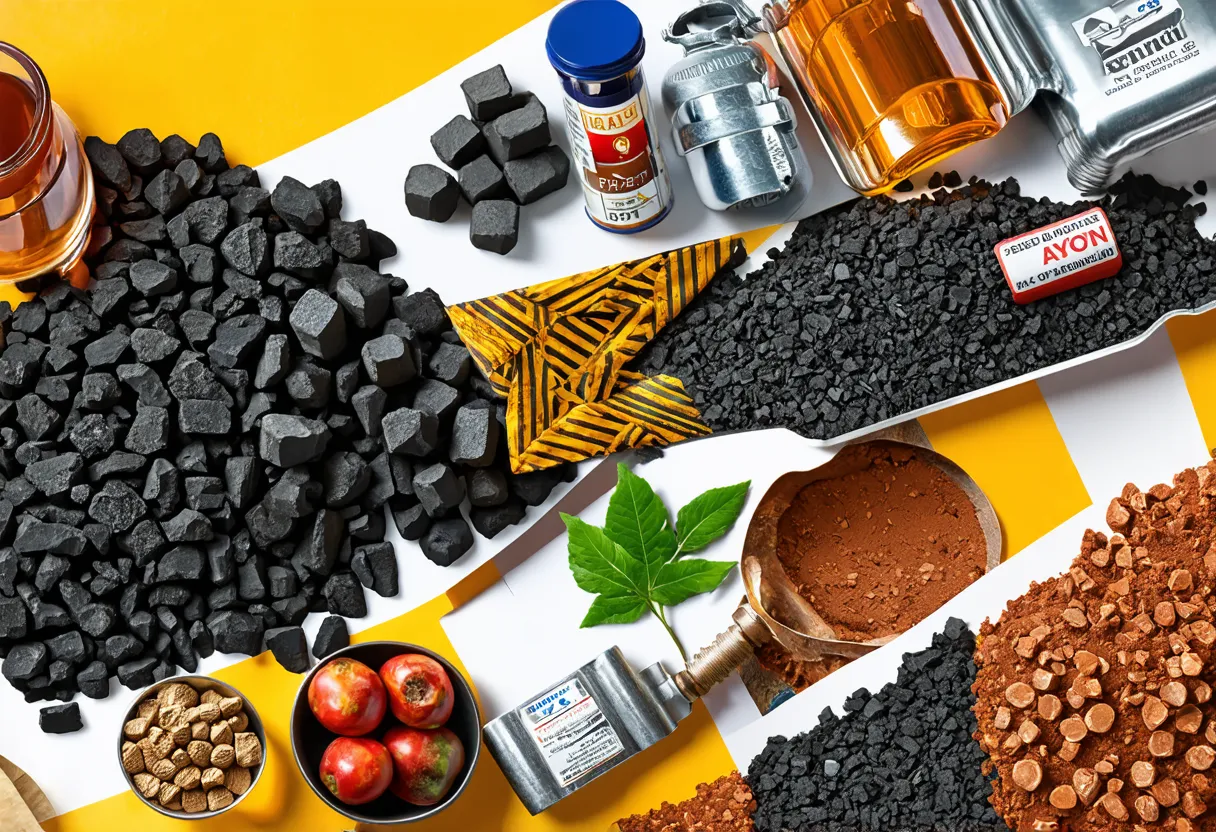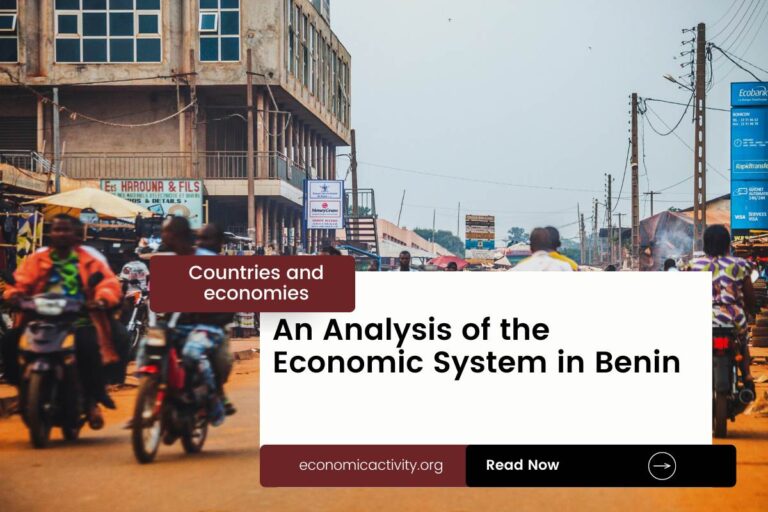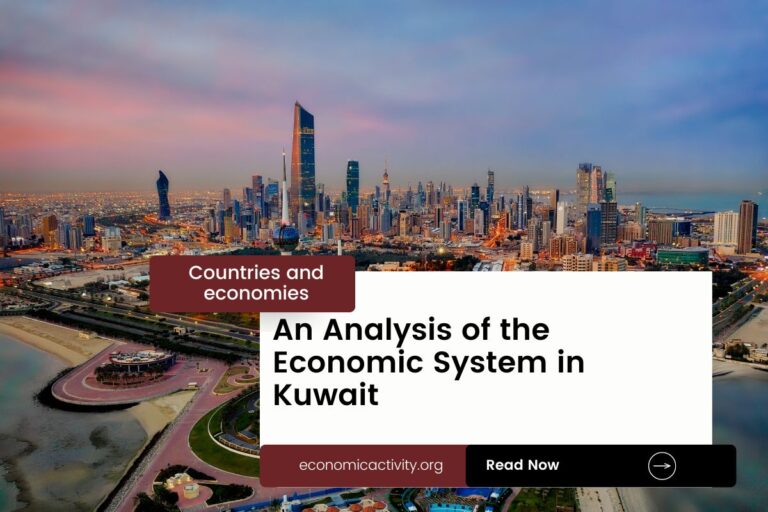Indonesia, with a population of 275,501,339, is the 4th most populous country in the world, following the United States. Located in Southeast Asia, it covers 1,916,906.77 square kilometers, ranking 14th globally, just below Mexico.
Indonesia’s economic position in 2022 is robust, with a GDP of $1,319,100,220,407.72, ranking it 16th globally. It follows Spain, whose GDP stands at $1,417,800,466,262.65. The GDP per capita in Indonesia is $4,787.99, placing it at 114th position.
Indonesia is behind Tonga, with a GDP per capita of $4,858. Overall, Indonesia’s economy is thriving, showing steady growth and development in various sectors.
What are the economic activities of Indonesia?
- Primary activities: 13.7% of GDP.
- Secondary activities: 41% of GDP.
- Tertiary activities: 45.4% of GDP.

Primary Sector of Indonesia
Indonesia’s primary sector, particularly agriculture, thrives due to its diverse climate and abundant natural resources. With 34.13% of the land dedicated to agriculture, the country produces a variety of crops and animal products. The main agricultural products include oil palm fruit, rice, sugarcane, maize, coconuts, cassava, bananas, eggs, mangoes/guavas, and chicken.
Despite contributing 13.7% to the GDP, agriculture plays a crucial role in providing employment and sustaining rural livelihoods. The wide range of products highlights the sector’s significance and resilience in Indonesia’s economy.
Indonesia’s diverse geology contributes to a rich array of natural resources, driving its primary sector. The country is abundant in petroleum, tin, natural gas, nickel, timber, bauxite, copper, fertile soils, coal, gold, and silver. Notably, Indonesia leads globally in nickel production, with an output of 1.6 million mt in 2022, significantly impacting its economy.
Indonesia’s oil production of 658,820 barrels per day ranks it 14th globally. With 3.69 billion barrels in reserves, it holds 0.19% of the world’s oil.
Indonesia’s gas production of 59.3 billion m³ in 2020 ranks it 14th globally, contributing significantly to its economic activity.
Secondary Sector of Indonesia
What is the secondary sector or what are secondary activities?
The secondary sector consists of industries that transform raw materials from primary activities into finished products for consumption. In Indonesia, the main industrial products include petroleum, textiles, automotive, electrical appliances, apparel, cement, medical instruments, handicrafts, chemical fertilizers, rubber, processed food, and jewelry.
Manufactures in Indonesia’s total exports are significant, accounting for 42.67% in 2023. This demonstrates the country’s strong industrial base and global competitiveness.
Tertiary sector of Indonesia
What is the tertiary sector or what are tertiary activities?
The tertiary sector in Indonesia encompasses a wide range of services where individuals provide knowledge and time to enhance productivity and meet various needs. This sector includes intangible goods such as advice, expertise, and attention, catering to both consumers and businesses. Some of the key tertiary activities in Indonesia are restaurants, healthcare and medical care, education and training, banking and finance, communication and information exchange, media production and distribution, and tourism and hospitality.
Among these, Indonesia’s economy heavily relies on tourism, contributing significantly to its GDP. With 16,107,000 annual arrivals, accounting for 0.0585 of the population, popular destinations like Bali’s beaches and Borobudur Temple attract millions, making tourism a vital economic driver for the country.
Another example of tertiary economic activity is the mobile cellular sector, with 316 million subscriptions, supporting technological growth. This connectivity fosters innovation, enhances digital services, and drives economic development.
Military Activities and Economic Sectors of Indonesia
The military is a key example of many economic activities working together. In the primary sector, resources are extracted for military use, such as minerals and fuels. The secondary sector focuses on manufacturing military equipment, like weapons and vehicles. The tertiary sector includes services provided by the military, while the quaternary sector involves military research and development. Lastly, the quinary sector deals with high-level military decision-making and strategy.
In Indonesia, the military’s annual expenditure is about 9.48 billion US dollars, which is 0.70% of the country’s GDP. The active military force has 404,500 personnel, giving a ratio of 3.9 active military members for every 1,000 people in the population.
Biggest company in Indonesia
Which is the biggest company in Indonesia? The largest company is Bank Central Asia (BCA), founded in 1955. It operates in the banking industry and is part of the tertiary sector. BCA has a market value of approximately $67.62 billion, making it a key player in Indonesia’s economy.
International Trade of Indonesia
Import Activities of Indonesia

Indonesia’s high import activities, accounting for 20.9% of GDP, are crucial for meeting domestic demand and supporting economic growth.
Indonesia’s key import activities include refined petroleum, crude petroleum, vehicle parts/accessories, natural gas, and plastics. Its top import partners are China (31%), Singapore (10%), Japan (6%), Malaysia (5%), and Thailand (5%).
Exports Activities of Indonesia

Indonesia’s total exports in 2023 amounted to $323.08 billion, accounting for 24.49% of its GDP. This indicates a medium level of importance, showcasing a significant contribution to the country’s economy.
Indonesia’s export activities are diverse, with coal, palm oil, iron alloys, natural gas, and steel being the main commodities. The country’s top export partners are China (21%), the US (10%), Japan (8%), India (8%), and Malaysia (5%).
Indonesia economy challenges in 2024
Indonesia, one of the fastest-growing economies in Southeast Asia, faces challenges in 2024. The COVID-19 pandemic reversed its poverty reduction progress, impacting financial resilience. Despite being an upper middle-income country, it strives to enhance human capital and competitiveness as part of its 20-year development plan.



Leave a Reply